What If, sometimes rendered as What If...?, is a series of comic books published by Marvel Comics whose stories explore how the Marvel Universe might have unfolded if key moments in its history hadn't occurred as they did in mainstream continuity. What If comics have been published in eleven series (volumes).
The narrator
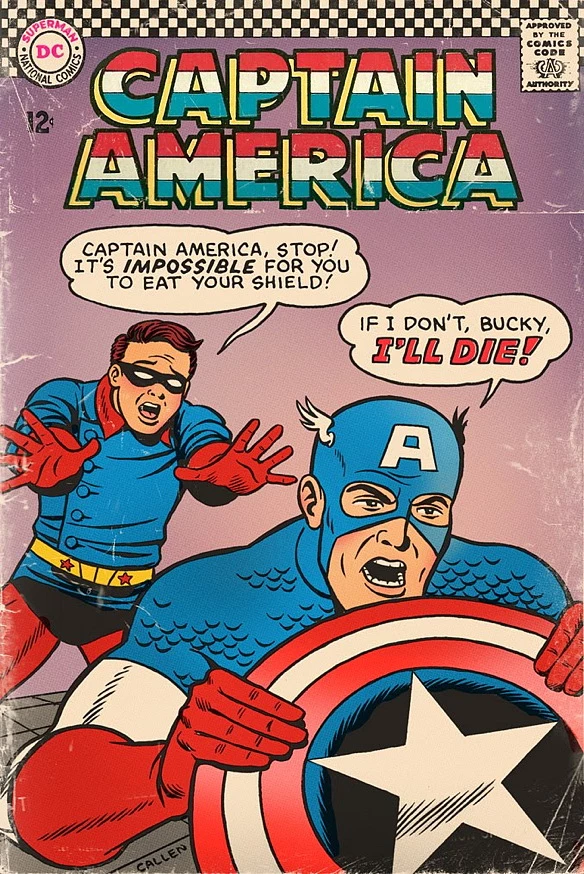
The stories of the inaugural series (1977â€"1984) feature the alien Uatu the Watcher as a narrator. From the moon, Uatu, a member of an immortal race of "Watchers", observes both the Earth and alternate realities. Most What If stories begin with Uatu describing an event in the mainstream Marvel Universe, then introducing a point of divergence in that event and then describing the consequences of the divergence. Uatu was used similarly in the second series (1989â€"1998) until a point where, in the Fantastic Four comic book, Uatu was punished for destroying another Watcher. This made the use of Uatu improbable so the character was phased out to its last appearance in issue #76. Without a framing device, the stories themselves became the focus. However, in later series, some writers chose to introduce alternative narrators. For example, in Volume 3, in What If Karen Page Had Lived?, What If Jessica Jones Had Joined the Avengers? and in Daredevil (2005), Brian Michael Bendis, the writer himself, made a cameo as narrator. In the early 2006 series, a hacker, whose online alias is "The Watcher", opens each of the six issues.
Points of divergence
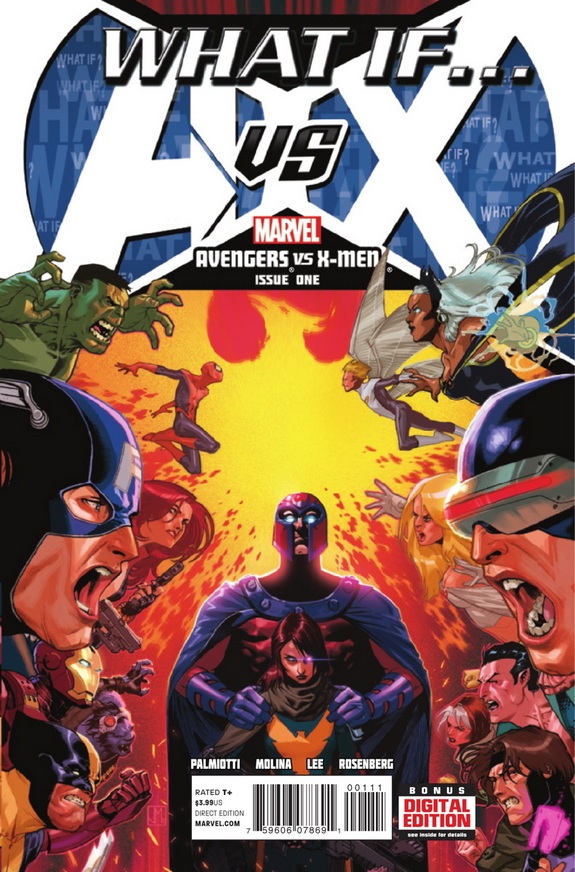
Character actions
Some points of divergence in plot occur when a character's action differs from (or is even opposite to) the corresponding mainstream Marvel event. For example, in a 1980 Captain America storyline, the hero declines an invitation to run for President of the United States as a third-party candidate. In the What If Captain America Became President? (issue #26 1980) storyline, he accepts the nomination and wins the 1980 Presidential Election.
Superhero or villain
In some What if story lines, when the Marvel character receives his or her special powers, the superhero persona is abandoned for a life of crime. For example, in the Marvel mainstream story, The Dark Phoenix Saga from the X-Men series, Jean Grey, instead of committing suicide, submits to a lobotomy that removes her powers. In the What If version, Jean Grey regains her powers and kills the X-Men, including Scott Summers. The shock of this causes Dark Phoenix to create a galactic cataclysm. Another example occurs in the Korvac saga (Avengers). In the mainstream, Korvac (Michael) has a friend, Corina (the daughter of the "Elder" known as the Collector), who does not fully support him, causing him doubt. In the What if story line, Corina gives unqualified support to Korvac which leads him to kill the Avengers. Korvac revives some of the Avengers for his own corps. Korvac goes on to annihilate the universe, depicted as the cosmic entity, Eternity.
Characters 'killed off'
Major characters could be (and often were) killed off in the alternate realities.
Humorous options
Not all What if stories were serious. For example, in issue #11, members of the original Marvel Bullpenâ€"Stan Lee, Jack Kirby, Flo Steinberg and Sol Brodskyâ€"were given the powers of the Fantastic Four.
"Why not?"
Later issues contained one-page or one-panel throwaway gags. For example, the issue's letter page could be entitled with the question, "Why Not?". The words are spoke in exasperation by Uatu. He is depicted being overwhelmed with letters whilst in the process of receiving yet another bag of mail. The gag was carried forward to later issues, with letters pages entitled What Now?.
Game Appearances
The 2000 video game Spider-Man contained a hidden path within the game which enabled "What if mode"; this mode of gameplay featured the vision of a Watcher who narrates with a "what if" attitude and offers a slightly alternate storyline and light humor within the game. This game mode, when completed, also unlocks use of the Captain Universe costume for play.
Prequels
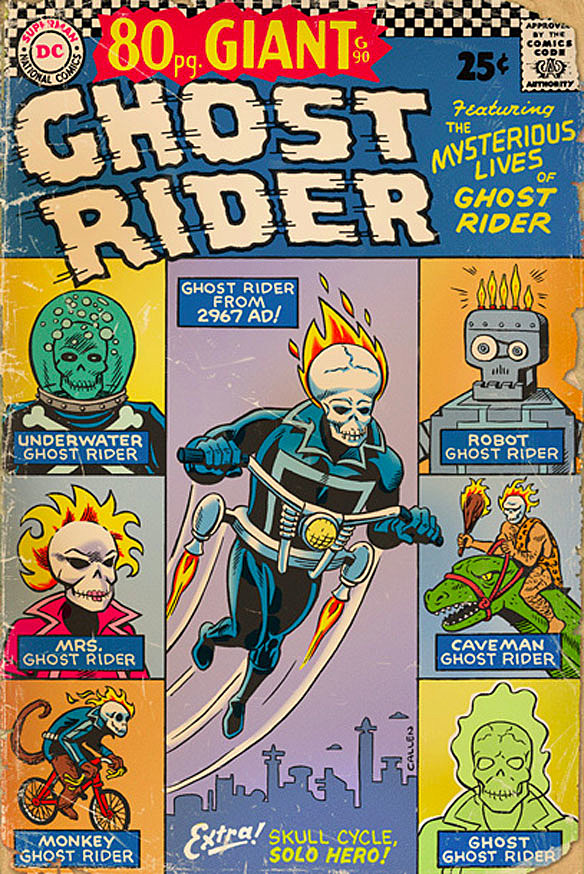
Marvel Comics occasionally issued backup features, Untold Tales From the Marvel Universe. These stories explained the origins of some of Marvel's superhuman races. These included the Eternals, the Inhumans and characters such as Tigra.
Publication history
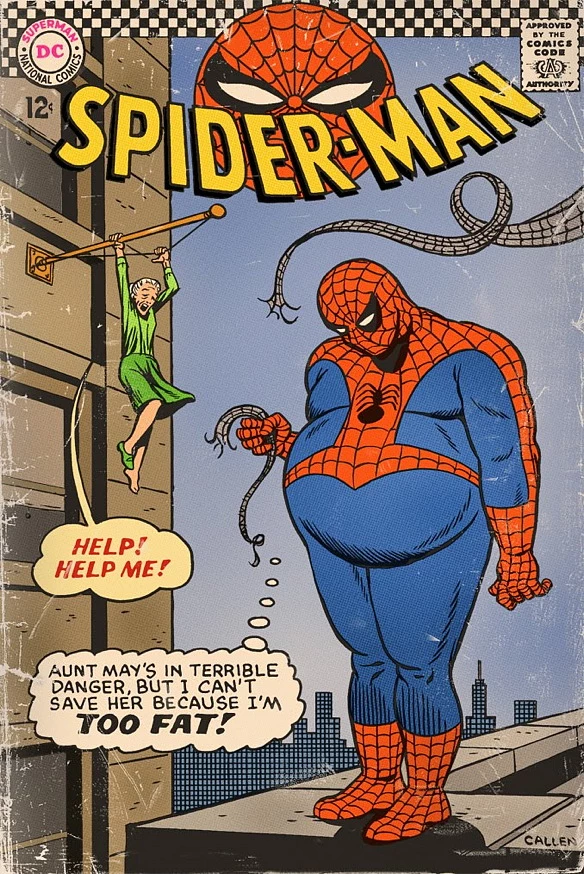
Volume 1
The initial 47 issue series ran from February 1977 to October 1984. The first What If story was What If Spider-Man had Joined the 'Fantastic Four'?. It presented an alternate version of events seen in The Amazing Spider-Man #1 (1963). Following the cancellation of the series, Marvel published a one-shot What If? Special (June 1988) with the story "What If Iron Man Had Been a Traitor?"
Volume 2
From July 1989 to November 1998, Marvel published 114 monthly What If issues. The second series revisited and revised ideas from Volume 1. In Volume 2, stories could span multiple issues (the Volume 1 stories were contained within a single issue). Also, sometimes, the Volume 2 stories would offer multiple plots and endings. The reader could decide which to adopt. For example, in What If the War Machine Had Not Destroyed the Living Laser?, three endings were offered. The humorous aspect of Volume 1 was retained through Volume 2 culminating in issue #34, What If No One Was Watching the Watcher? which was humorous throughout. It contained mostly single page gags, with a few longer stories. Volume 2 contains a subtle crossover with the "Acts of Vengeance" storyline. In the pages of the mainstream Quasar, the hero pursues "The Living Laser" into the Watcher's lair on the moon. He then flees through Uatu's portal into other universes. In the corresponding month's What if issue, "The Living Laser" had a cameo appearance as a streak of light. Later, Uatu directs "Quasar" to track down "The Living Laser" through several What If universes. Eventually, "Quasar" arrives in the New Universe, where he receives the Star Brand. The What if format became well known. By issue #87, direct reference to the plot divergence was not required. Instead, the issue cover art closely, but not exactly, resembled the corresponding mainstream story. The What if logo was enough to denote its "alternate universe" status. In issue #105, What If introduced Spider-Girl. The new character was popular enough for a spin off series. From this, the MC2 line of publications were developed.
Volume 3
In February 2005, Marvel published a further six issues of What If. They were all in the "one-shot" format. The editor, Justin Gabrie, attributed the publication of Volume 3 to a suggestion from C. B. Cebulski. Uatu the Watcher narrates some issues and there is a cameo by Brian Michael Bendis as narrator (see "The narrator" above). In Volume 3, there is a "nod" to a Volume 1 story, What if Uncle Ben had lived? In a conversation between a comic shop customer and an attendant, the customer asks,"What if Aunt May had died instead of Uncle Ben?" Leading to another alternative plot. Marvel published a single parody edition called Wha... Huh?!? in August 2005.
Volume 4
In February 2006, publication of Volume 4 began. Again, there were six issues in the "one-shot" format. However, rather than follow What if tradition of using a divergence from a specific plot point, Volume 4 more closely resembled the DC Comics equivalent, Elseworlds which presents stories that are continuities based on alternative versions (in time or place) of DC Comic's canon. For example, Superman: Red Son, is a story in which Superman was raised in the Soviet Union instead of the United States. All but one of the Volume 4 issues uses this non-traditional format. The new format is explained by "Uatu the Watcher" having discovered historical documents from an alternative dimension. From the Japanese feudal era, the divergence of a shared, alternative universe, Earth - 717, begins. This divergence is the time when a Daredevil hero known as "The Devil Who Dares" appears. It is also the realm where characters are given alternative life histories and where they proceed in alternative historical periods. Examples from Volume 4 include, Captain America battling the "White Skull" during the American Civil War; Wolverine taking the role of the Punisher and fighting mobsters in 1920s Chicago; Sub-Mariner being raised by his father on the surface during World War II; Thor becoming a herald of Galactus; and a Russian version of the Fantastic Four, known as the "Ultimate Federalist Freedom Fighters", being a part of the Cold War.
Volume 5
Volume 5 was published at the end of 2006 when Marvel released five new "one-shot" comics. The Volume 5 series focused on alternate outcomes of major storylines. For example, "Age of Apocalypse", "Avengers Disassembled", "Spider-Man: The Other", "Wolverine: Enemy of the State" and "X-Men: Deadly Genesis". The stories were later gathered in a trade paperback entitled What If: Event Horizon.
Volume 6
Volume 6 consisted of five issues (2007- 2008). A sixth, entitled What If: This Was the Fantastic Four, featuring Spider-Man, Wolverine, Ghost Rider, and Hulk, was to be released in November 2007, but was withheld due to the death of Mike Wieringo. What If: This Was the Fantastic Four was released as a tribute to Wieringo in June 2008 as a 48-page special. All its proceeds went to the Hero Initiative. The other issues were: What If?: Planet Hulk (October 2007); What If?: Annihilation (November 2007); two What If? specials for "Civil War" and "X-Men: Rise and Fall of the Shi'ar Empire" (December 2007) and What If: Spider-Man vs. Wolverine (January 2008). These issues were collected into a trade paperback entitled What If...? Civil War.
Volume 7
In December 2008, Marvel published 5 What If specials which appeared weekly. They were based on alternative outcomes of classic Marvel events. They included: Fallen Son: The Death of Captain America, House of M, Spider-Man: Back in Black, Secret Wars, and Infinity Gauntlet. A new "Fantastic Four" consisted of Hulk, Spider-Man, Iron Man, and Wolverine. In addition, a storyline featuring the Runaways as the Young Avengers ran throughout Volume 7.
Volume 8
In December 2009, a new series was published. Volume 8 focused on three recent events in the Marvel Universe: the Spider-Man: House of M mini series; World War Hulk and Secret Invasion. There was also an edition about the Astonishing X-Men series and a classic What If? about "Daredevil" and "Elektra". With the exception of this last issue, each comic in Volume 8 featured two alternatives for the event.
Volume 9
In September 2010, Marvel announced a ninth series of five What If issues in the one-shot format, to be released in December 2010. The second to fifth issues of Volume 9 were not numbered. What If? issue #200 was an extra-sized edition featuring two stories. It presented an alternative for the Siege Marvel universe event, asking what might have happened if the Sentry had not lost control and Norman Osborn had conquered Asgard. The second story examined the classic 1960s Fantastic Four trilogy, "The Coming of Galactus". The second story of the first issue was written by Stan Lee, the author of the original. It described what may have been if the Uatu, the Watcher killed Galactus to prevent Galactus from consuming the Earth. The second issue in Volume 9, featured a What If for "Dark Reign", subtitled, The Osborn Assassination. It asks what may have occurred had Clint Barton succeeded in his mission to kill Norman Osborn. The third issue of the series featured Spider-Man during the recent "Grim Hunt" storyline. Similarly, it asks what might have happened if Peter had elected to kill Kraven the Hunter. The fourth edition of Volume 9 called Wolverine: Father, focuses on Wolverine's turbulent relationship with his long-lost and wayward son, Daken: what would have happened if Logan had known about Daken's existence and raised him from birth. The final issue entitled Demon in an Armor, features Iron Man and Doctor Doom, asking what might have happened if the young Tony Stark had become involved in a body switching incident and found himself in the body of Victor von Doom, whilst Doom takes Tony's body to control Stark Industries. A prequel runs through volume 9 about a divergence where the Venom symbiote possesses Deadpool.
Volume 10
On March 22, 2013, Marvel's editor-in-chief Axel Alonso revealed to Comic Book Resources that What If...? was coming back with What If...? Avengers vs. X-Men. He said, "if you've ever wondered what might have happened if the Phoenix Force had found a different host than Cyclops, Emma Frost, Namor, and Colossus in last year's biggest super hero event, then you'll want to read "What If? Avengers Vs. X-Men" a 4-issue limited series, written by Jimmy Palmiotti and illustrated by Jorge Molina that ships weekly this July. I don't want to give too much away about the story, but let's just say that things might have gone a lot differently if Magneto had taken a stronger hand in determining Hope Summers' fate."
Volume 11
In April 2014, Marvel released the five part What If? Age of Ultron which examined the consequences of Wolverine going back in time to kill Hank Pym before creating Ultron. Each issue explored what a new universe would be like which arose from the removal of another core Avenger, with Wasp in #1, Iron Man in #2, Thor in #3 and Captain America in #4. The series was concluded in #5 with a world where Hank Pym never created Ultron in the first place and thus a universe without Ultron's creation the Vision.
Alternate Earths
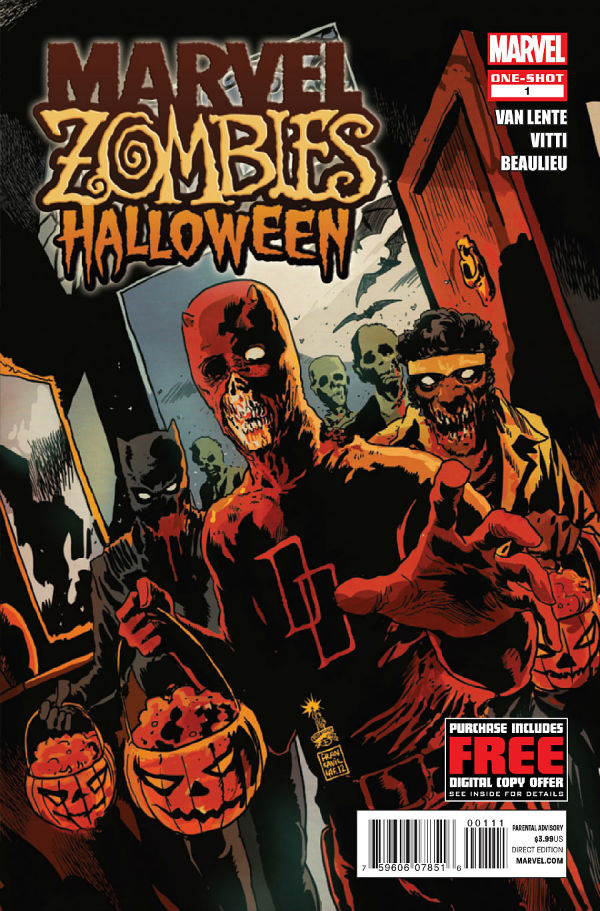
Marvel has given several What If stories official numerical designations to make them contiguous with the Marvel Comics Multiverse and differentiating them from the main Marvel Universe of Earth-616.
Bibliography
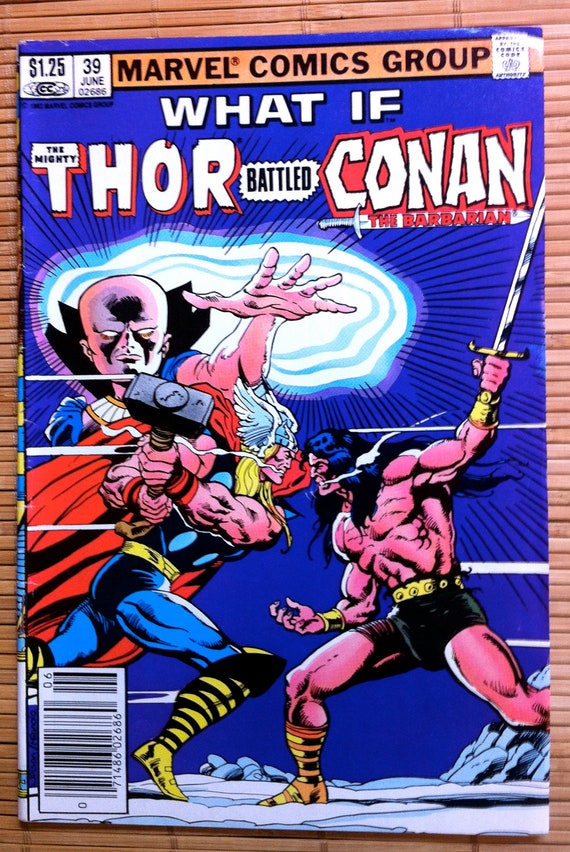
Collected editions
A number of the stories have been collated in trade paperbacks.
- What If? Classic:
- Volume 1 (collects What If #1-6), January 2005, ISBN 0-7851-1702-4
- Volume 2 (collects What If #7-12), January 2006, ISBN 0-7851-1843-8
- Volume 3 (collects What If #14-15, 17-20), January 2007, ISBN 0-7851-2081-5
- Volume 4 (collects What If #21-26), December 2007, ISBN 0-7851-2738-0
- Volume 5 (collects What If #27-32), January 2009, ISBN 0-7851-3086-1
- Volume 6 (collects What If #33-38), December 2009, ISBN 0-7851-3753-X
- Volume 7 (collects What If #40-42,43 (backup only), 44-47), February 2011, ISBN 0-7851-5311-X
- X-Men: Alterniverse Visions (collects What If vol. 2, #40, 59, 62, 66, 69), August 1996, ISBN 0-7851-0194-2 (Boxtree, May 1996, ISBN 0-7522-0342-8)
- What If?: Why Not? (collects What If vol. 3), March 2005, ISBN 0-7851-1593-5
- What If?: Mirror Mirror (collects What If vol. 4), May 2006, ISBN 0-7851-1902-7
- What If?: Event Horizon (collects What If vol. 5), July 2007, ISBN 0-7851-2183-8
- What If?: Civil War (collects What If vol. 6), April 2008, ISBN 0-7851-3036-5
- What If?: Secret Wars (collects What If vol. 7), April 2009, ISBN 0-7851-3341-0
- What If?: Secret Invasion (collects What If? vol. 8), May 2010, ISBN 0-7851-4109-X
- What If?: Dark Avengers (collects What If? vol. 9), April 2011, ISBN 0-7851-5278-4
See also
- Canon (fiction)
- Elseworlds
- Multiverse (Marvel Comics)
- What The--?!
- Wha...Huh?
References
External links
- 'What If (vol. 1) at the Grand Comics Database
- What If (vol. 1) at the Comic Book DB
- 'What If (vol. 2) at the Grand Comics Database
- What If (vol. 2) at the Comic Book DB
- Alternity
